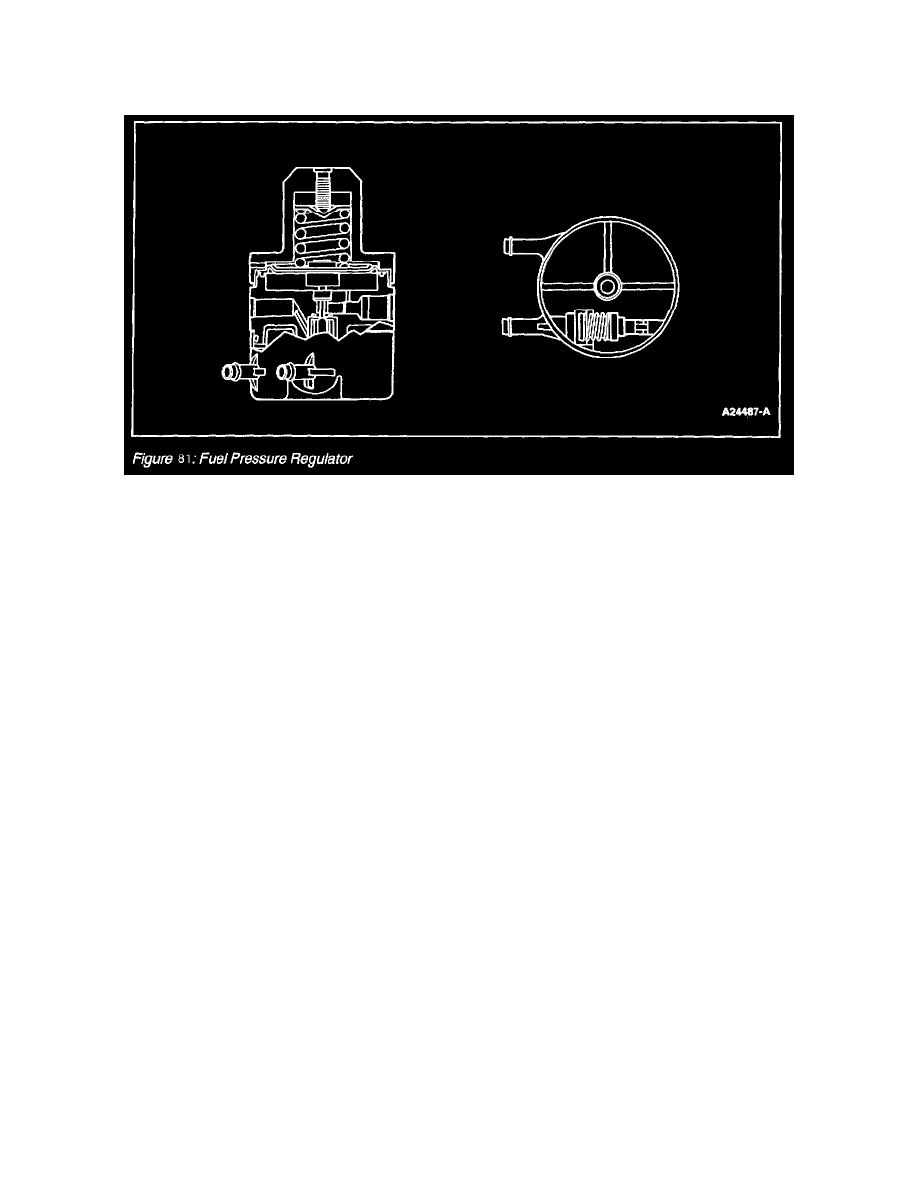Explorer AWD V6-4.0L VIN K Flex Fuel (2003)

Fuel Pressure Regulator: Description and Operation
Natural Gas Fuel System
FUEL PRESSURE REGULATOR
Fuel Pressure Regulator
The fuel pressure regulator (Figure 80) used in the Natural Gas fuel system is a single-stage pressure reducing regulator which expands natural gas
from storage pressures of 1,379 to 20,685 kPa (200 to 3,000 psig) to engine fuel injector pressures of 724 to 862 kPa (105 to 125 psig)
The regulator contains a pressure relief device, a 1,896 kPa (275 psig) check valve, which protects the low pressure fuel system. The low pressure
fuel system no longer must fulfill the design requirements of the high pressure fuel system, therefore reducing cost, weight and complexity.
When gas expands, the fuel temperature drops significantly causing extreme cold temperatures (-177°C or -160°F) that may damage synthetic fuel
system components as well as cause water vapor within the fuel to condense, freeze and plug the lines, valve and injectors. To prevent this, engine
coolant is routed through the fuel pressure regulator to warm the fuel before it expands.
The regulator has an internal thermostat to control the flow of engine coolant. This prevents overheating and subsequent thinning of the fuel which
may cause lean combustion. Outlet coolant flow is restricted by the thermostat when it rises above approximately 82°C (100°F).
